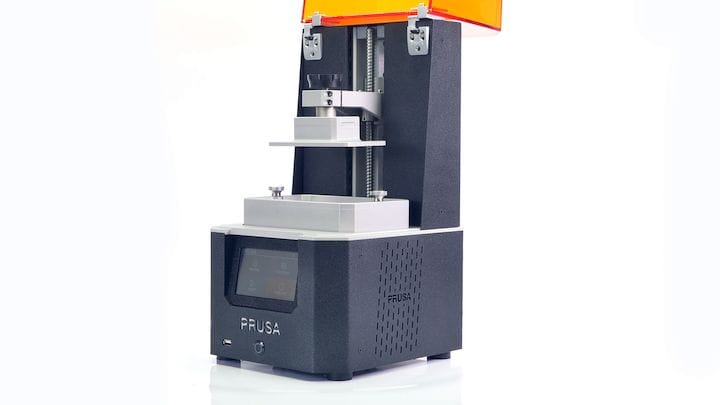![The new Prusa SL1 resin 3D printer, with cover open [Source: Prusa]](https://fabbaloo.com/wp-content/uploads/2020/05/image-asset_img_5eb0a66dbe07d.jpg)
Prusa Research announced a new resin-based 3D printer. What will this mean?
I’m surprised and not surprised that Prusa Research is getting into resin 3D printing. I’m surprised because they’ve spent so very long in the filament printer business it’s hard to imagine them doing otherwise.
I’m not surprised because resin 3D printing is becoming significantly more popular. Operators appreciate the much higher quality prints delivered by resin machines, and the different materials available. Prusa Research is not the first filament printer manufacturer to add a resin machine, and they won’t be the last.
What I’m interested in discussing is the implications of this announcement on the 3D print world. I have some thoughts.
One relates to the design of the machine. Unlike Futur3D, Prusa Research will open source the machine, just as they have done for their prior models. This is risky, as they face the possibility of others manufacturing the device and selling at a low cost to undercut Prusa Research.
The only way to avoid this scenario and still be open source is to provide excellent service and machine quality. That seems to be Prusa Research’s goal in this venture.
Prusa Research is targeting their machine in a market spot directly in-between the “cheap Chinese machines” and the “expensive” Formlabs Form 2. Josef Prusa explains:
“The SL1 isn’t trying to compete with the flimsy Photon or with the ultra-pricey Form but instead be sort of an MK3 of the resin world – have the best print quality, convenience, ease of use at a price which is accessible for the everyday hobby maker.”
But here’s the thing: the Form 2 is actually NOT expensive. Yes, it’s multiple times the price of the new SL1, but the Form 2 is multiple times LESS expensive than competing industrial resin 3D printers. Formlabs is growing very rapidly because of this huge price advantage over the incumbents in that market.
Thus we have a kind of graduated scale of resin 3D printers to choose from.
The professional users will no doubt focus on the higher-end machines, and would certainly avoid the low-cost machines due to quality and service concerns.
The question to ask is, would they consider using the SL1 instead of the Form 2?
I think it is possible.
I’ve seen the same effect with Prusa’s filament equipment: some professional offices buy them instead of higher-end equipment because they are inexpensive and are just good enough to serve the professional office’s purpose.
Could the same happen with the SL1? It remains to be seen, and I’d be watching the reliability and quality statistics from early users to see how this plays out. If the SL1 is as advertised and reliably provides good quality prints, they could win over a large number of professionals in addition to the hobby market they clearly are addressing first.
This could put some pressure on the Form 2, but I don’t think it would be significant. The Form 2 is an excellent 3D printer, perhaps the easiest machine I’ve ever had the chance to operate. Its software and controls are buttery smooth and would be hard to beat.
Where the effect may mostly be felt is with the more expensive resin 3D printer manufacturers, whose equipment will now be viewed as even more expensive. Consider the shift effect:
-
Some Form 2 users may opt for the SL1
-
Some high-end users may opt for the Form 2
-
No one replaces the high-end users. Oh oh!
I suspect that although Prusa Research is targeting hobbyists with the SL1, its effects may indeed reach far beyond that market.
Via Prusa Research











A research thesis details the incredibly complex world of volumetric 3D printing. We review the highlights.